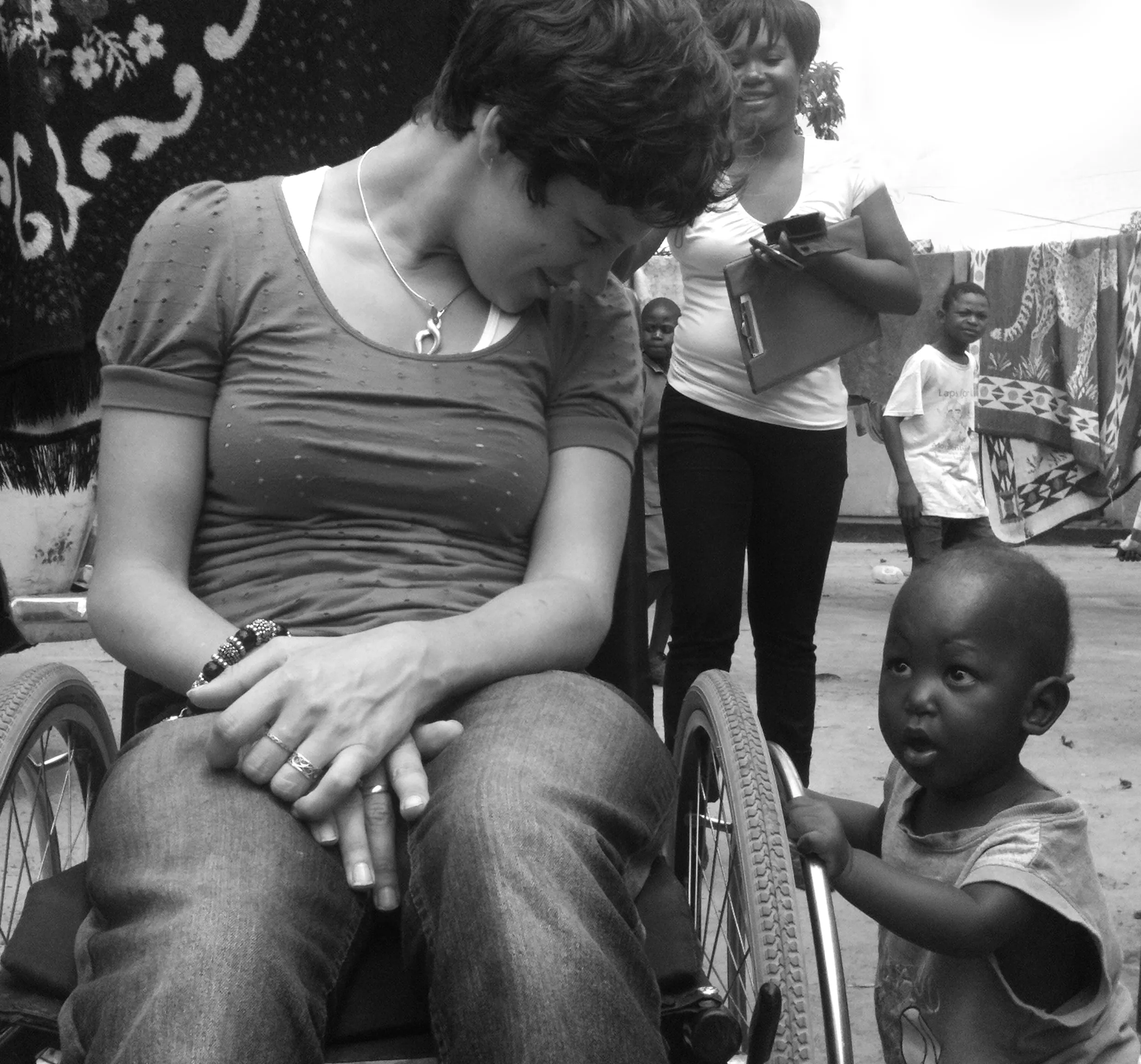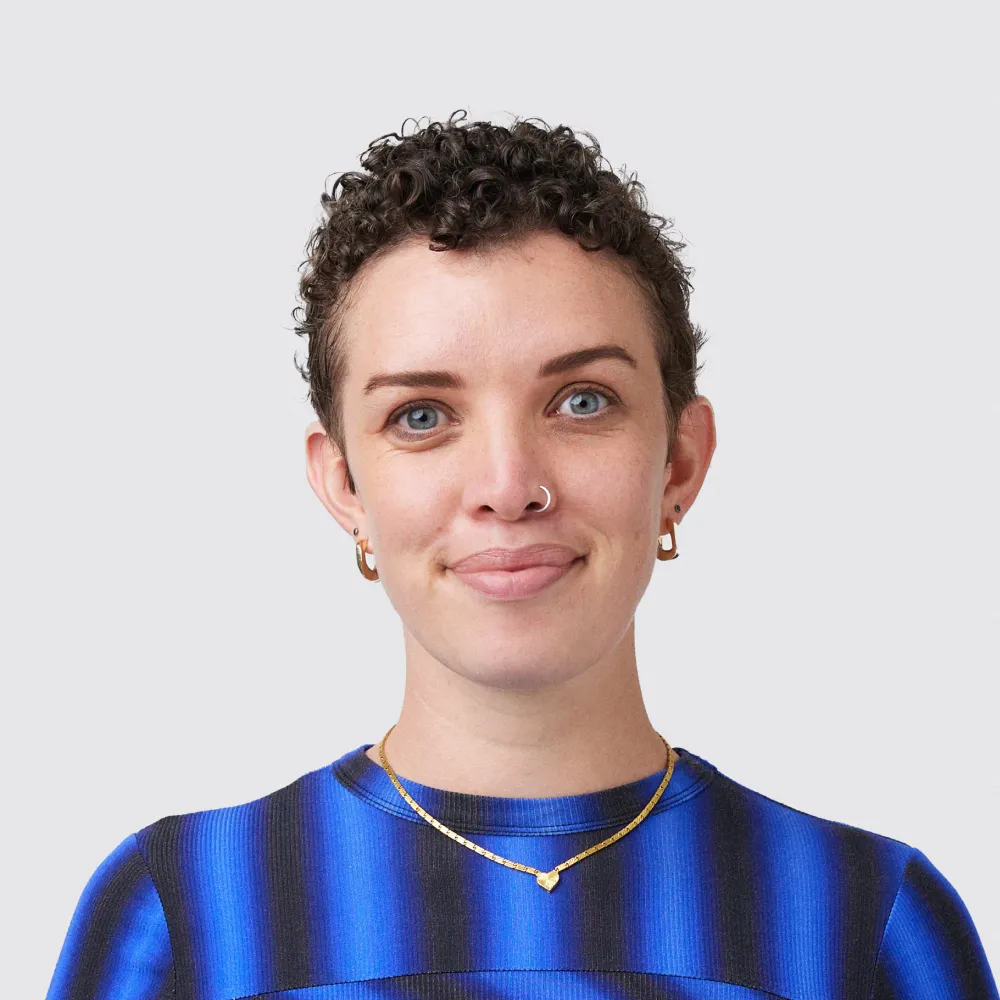What does the future of disability inclusion look like?
How can we use the learnings from the past few years to maintain and grow accessible communities and services? How can we get to a place beyond inclusion compliance that’s driven by genuine relationships?
Stevie Wills, Community Education Officer at CBM Australia, sums it up in sharing her biggest dream with us: “That people would have the support to be all they can be, and have genuine friendship.”
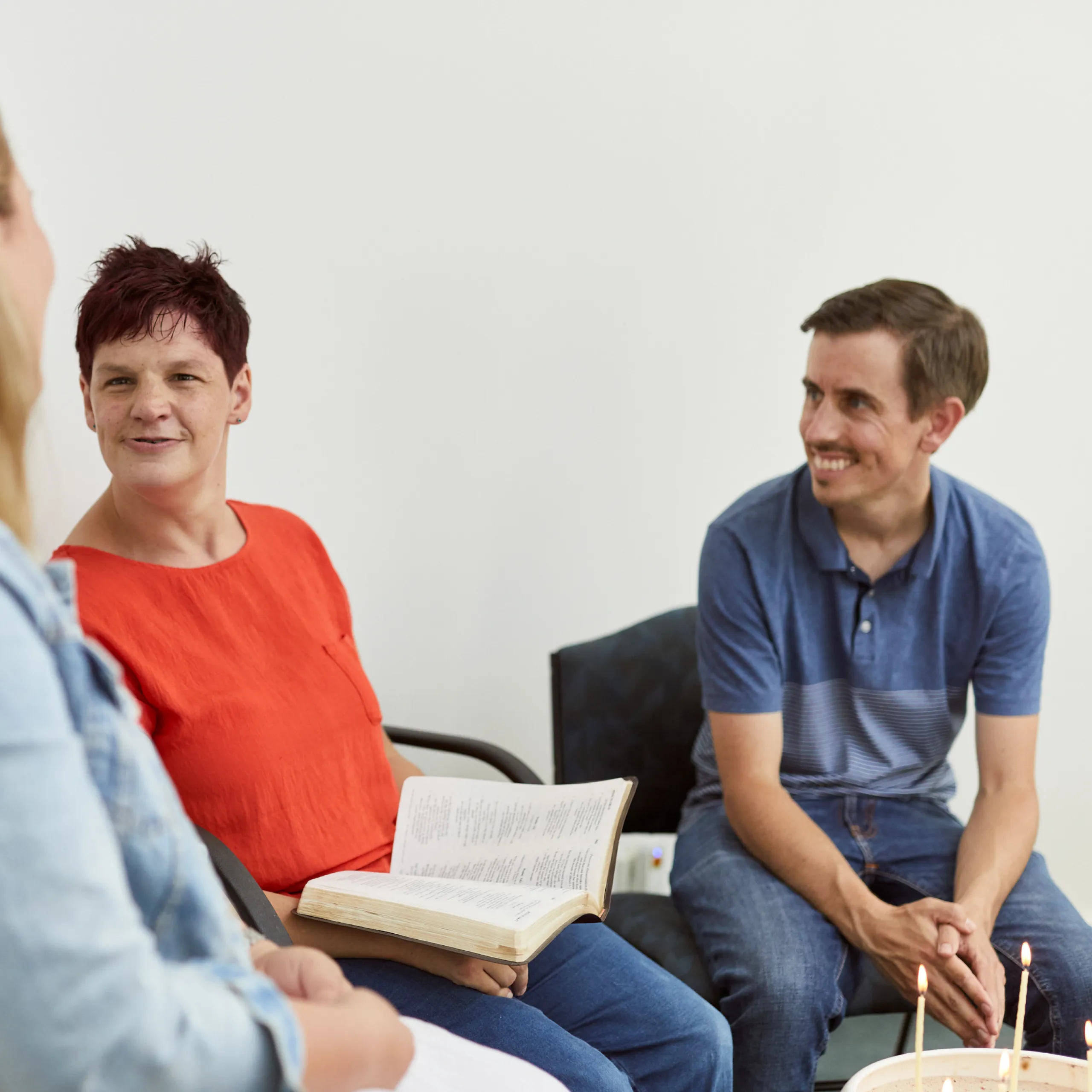
In conversation
Joe Pinkard, Church and Community Engagement Manager at CBM Australia
Stevie Wills, Community Education Officer at CBM Australia
Rebecca Heffernan, Content Experience Lead at Today
Kate Bensen, Storyteller at Today
Kate: Thanks for joining us today, Stevie and Joe. Could we start by hearing about your roles at CBM?
Joe: I’m Joe Pinkard, the Church and Community Engagement Manager at CBM Australia. I basically try to get churches around Australia to support CBM's work in different ways. That could be financially through donating, it could be supporting our advocacy initiatives—and the main way that we connected with Today—through an initiative called Luke14, which is based on a Bible verse around the inclusion of people with disabilities. The program’s aim is to equip churches in Australia and Christian communities to be more inclusive of people with disabilities.
Stevie: I'm Stevie, I'm the Community Education Officer at CBM. My role is to engage the Australian public with issues of disability and poverty internationally as well as disability inclusion in the local church context.
Joe: Stevie's also a performance poet, so she writes a lot of poetry and performs that on themes of justice and inclusion.
Part of the reason why we have a focus on churches is because of our heritage. We're a Christian organisation, we were founded 110 years ago by a German pastor called Ernst Christoffel, and we've been operating out of Australia for about 50 years. A lot of our supporters are Christians or churchgoers who've supported us because of that heritage.
Kate: We'd love to hear about what disability inclusion means to you.
Joe: For me, it's about genuine belonging and participation. So looking at how both in Australia and globally we can move beyond people with disabilities being the object of charity, and find opportunities for people with disabilities to be equal members in society, be leaders, live out their full potential, and access their human rights.
Stevie: To me, inclusion is having access to all aspects of community life. It's the removal of barriers that stop people from participating in ordinary life, and it is valuing people, and wanting people to be part of your life, so removing barriers because you value them, not because that's a good thing to do. In a church context, I often say it’s about wanting people to be part of your life. To me, inclusion is motivated by genuine friendship, not because it’s what we should do.
Beck: I was just thinking of something that you said during our project Stevie, which was that disability is normal and frequent. So talking about disability inclusion is about building a fairer, more equitable way of doing everything. Like removing barriers, and not excluding so many people in the population.
Joe: The World Health Organisation says that about 15% of people around the world live with a disability, so that is significant, it's one in six people.
Something I often ask people when we're doing workshops is, “Think about your community group, your sports club, your church, your yoga class. And obviously, not all disabilities are visible, but are there one in six people with disabilities in those places? And if there isn't, why isn't there?” And it's probably because either intentionally or unintentionally, we're excluding people with disabilities from those community groups and from those places.
Stevie: As people get older, most people experience disability in some form. It’s part of life. If you make an effort to work towards inclusion, you’re providing and making access for everyone.
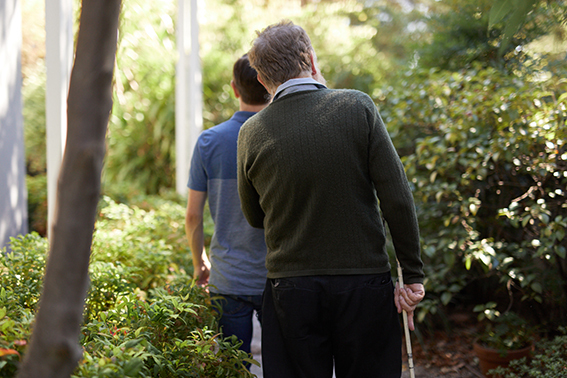
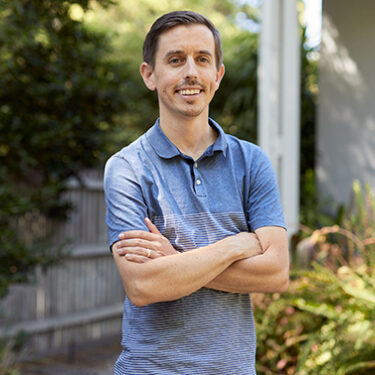
Joe Pinkard, Church and Community Engagement Manager at CBM Australia
Beck: Thanks, Joe and Stevie. Our next question was about how CBM specifically approaches inclusion and accessibility? And I wonder if you could share an example of how that works practically.
Joe: CBM is an international development organisation, and we have three drivers of change that we talk about. So we have traditional field programs—or international development programs—that cover a range of areas. We work through the disability movement, with a strong connection to Organisations of People with Disabilities. Putting local voices at the heart of our work. So it could be something like a cataract operation for an individual, but it could also be a community in a place like Bangladesh or Vanuatu that's highly prone to environmental disasters, and how do we partner together to ensure that people with disabilities are included in the responses to those disasters. The same things happen in Australia, in bushfire prone areas or flood-prone areas, but we mostly act internationally through our partnerships.
Another vehicle that we use is advocacy. We advocate to the Australian Government to ensure that disability inclusion is a part of Australia's aid budget and overseas development assistance.
Through our partners in the developing world, we advocate to their local governments to be more inclusive of people with disabilities.
The last area—or vehicle of change that we have—is our inclusive advisory group. Which is a group of consultants that advocate and partner with people with disability groups, but also provide advice and support to other international development agencies like World Vision, or the World Food Program, to help them create more inclusive development programs.
Kate: We're really interested to hear how you define good inclusion, and how that's different to how you see it executed or defined in other spaces.
Joe: Often when we think about accessibility, we think about compliance. So somewhere along the line, someone's legislated that for a space to be inclusive, or a program to be inclusive, we need to have these certain elements in it. It can become an exercise in ticking boxes to ensure that our space is compliant.
But I think what I've learned from Stevie over the years is that whilst that matters there is more to inclusion...let's give an example from today. Stevie and I caught up with a group of colleagues to have lunch at a restaurant, and because we were a large group, they put us upstairs.
When Stevie goes out, she either uses a walker or a wheelchair. There was no lift there, and there was no way for Stevie to get upstairs. The accessible toilet was also upstairs. This is a restaurant that's been there for 40 years, it's not new, but they're the kind of things that as a person without a disability, I take for granted. It's only when we have a relationship with a person with a disability that we start to see the world through a different set of glasses, or a different lens. And that's everywhere. It's in Australia, and it's also around the world in developing countries, and the extent of exclusion depends on the people in those communities. And like Stevie was saying, how open they are to caring about creating an inclusive community for everyone.
Stevie: My experience of church life began with relationship, and out of that relationship, people said, "Okay, we love Stevie, so we need to pick her up to take her to include her, to be with her." But that is my story, and the other side is about being aware and creating an inclusive environment first, so making sure people feel welcome and are able to join. In my experience and in my work at CBM, it’s kind of about coming from both angles. You want to do it out of relationship, but also have a place where people are already going to feel welcome when they rock up.
Joe: At a global level, what drives us, and what drives legislation and compliance in Australia, is the United Nations Convention on the Rights of People with Disabilities, and the Disability Discrimination Act. They're probably, in Australia, what drives legislation, and that higher level of disability inclusion. As Stevie was saying, it's both, it's having that in place, and understanding that requirement, and then also that relationship, because the other challenge we often have is that we think of people with disabilities like a monoculture. I don't know if that's the right word, but like they're just one kind of person. But there's huge diversity of impairments, and the degrees of those impairments, and also their personality, their personal preferences, and what they want to do with their lives.
So that can often be a challenge for organisations, businesses, or churches. It can often be overwhelming to try and create something that's universally accessible. And that's one of our aspirations, I guess, but often building those relationships with people with disabilities that are present in your community, or in your business, or in your church, is a way to work out where to start.

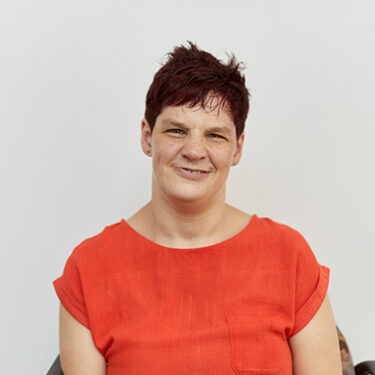
Stevie Wills, Community Education Officer at CBM Australia
Beck: On our project together, we knew, and reinforced the importance of working with people with lived experience as part of the design process. We're interested if you have any reflections on the impact of designing in this way, after your first human-centred design project?
Joe: We have this program that we've talked about, called Luke14, and it's been running for over 10 years, and it's been trying to support and equip churches in Australia to be more inclusive through some printed booklets, some DVDs, and some in-person workshops.
Over the last couple of years, we've known that it needed to change, that it needed to be updated, and like many programs do, we said, "Okay, it needs to be an online experience, and we need to explore what that online experience could look like."
One of the key catch cries in the disability rights movement is nothing about us without us, and that was ringing in my head, that we couldn't just do this without people with disabilities being central to it.
Taking a human-centred design approach was vital, almost a non-negotiable, I guess, in trying to think about what does an online version of Luke14 look, feel like, what should it be about, what should the content be, and things like that.
That's how we connected with Today, and the experience was really encouraging. Throughout the project we were getting positive feedback from the participants, about being listened to and being heard. In the sprint playbacks, again, people with, and people without disabilities were saying, "Yes, I can see the voices of people with disabilities in this." And that was what we were seeking.
Stevie, do you want to talk about how you found it? Because you were in the CBM working group, but also in some of the co-design and playbacks.
Stevie: It was really not what I expected, but the results and what you've drawn from it is great.
When I did the human-centred workshop, to be honest, I really didn't understand what you were doing. Then when we heard the playbacks, I saw you were able to draw all these different ideas together into really helpful stuff.
I didn't understand why you were asking the questions that you were, but what you got from it was so insightful, and you've come up with an amazing package.
It wasn’t questions about, "what is inclusion," it was questions like, “what apps do you like?” I trusted you as the experts.
Beck: Thanks, Stevie. All the good came from you, Stevie. I kept riffing off what you were saying anyway, so really, all credit to you.
Joe: Genuinely, we had positive feedback from participants about feeling listened to, feeling included, and that was really what we wanted when we were looking for an agency to work with—do they have experience working with people with disabilities? Because that's who we are, that's what we're about, and we wanted to feel comfortable and confident that we could work with an agency that we could trust, that had some kind of track record, and probably, that's what got Today over the line in terms of us deciding. We had two agencies that we were close to going with. And then, for me, it just was like, "Okay. Well, these guys have a track record that I feel like they can draw upon when it comes to this project that we're working on together."
Kate: What role does technology play in your mission to get people to see accessibility as more than compliance?
Stevie: Well, my mind goes to when my teacher recognised that I could do things and that I was certainly capable, and she organised for me to have a computer. I’m a poet. But without a computer, I wouldn't have a voice. I have what we call a keyguard. It’s a specialised keyboard and without that, I wouldn't have a voice.
I struggle with reading – likely due to my involuntary movements. As I got older e-books became available. And I have a computer program that reads read things out loud. So for me, as I got older, technology has increasingly become an important enabler. It’s helped me to do some short uni courses, and I also use it a lot for work.
Joe: When responding to humanitarian crises, technology can play an important role in notifying people with a disability that there is a disaster happening. But it comes back to design, planning, and inclusion for it actually to work.
So you might live in an area that's prone to flooding, and people say, "Okay, we put up this amazing speaker, and every time there's an emergency we'll play this siren, and you'll be able to hear that there's a flood happening, or about to happen." But what happens if you're deaf, or hard of hearing in that situation? So sometimes the technology needed there might be a flag system.
One of the examples that I've observed with Stevie living through the COVID pandemic, is that in Victoria, we QR code ourselves into everything, but Stevie doesn't use a smartphone, that isn't part of what you do. So how does that work for Stevie?
Sometimes tech doesn't always think inclusively, and that's one of the things we advocate for—particularly globally—is that people with disabilities need to have seat at the table, have a voice, be part of that design process, to ensure that accessibility is truly inclusive, truly accessible. Yeah. Stevie, I've spoken for you, so I wonder if you want to say whether I've actually captured that correctly or not?
When responding to humanitarian crises, technology can play an important role in notifying people with a disability that there is a disaster happening. But it comes back to design, planning, and inclusion for it actually to work.
Joseph Pinkard
Stevie: Yeah I use a basic phone and increasingly, it's like, "Check this out via the QR code.” And I’m like, “Yeah cool, thanks.” And this doesn’t just apply to me, it affects some of the older populations too.
I have found during this COVID period, things have been easier for me—and I feel a little guilty saying that—but I don’t have heaps of energy, so working from home has meant I've got energy for other things like creative stuff and catching up with friends.
As we’ve come out of COVID, I've really valued that my church is continuing online, as well as in person. So I have the option to say, "I'm not going to push it today, I'll watch the service online.” Last Sunday, I had church and then my friendship group was going out for lunch. So I really have the option of going, "Okay. I can catch up with church when I’m ready and still have energy to do other things I want to do.”
It's given a lot of people who are restricted because of their health or disabilities more options. People with disabilities are now finding work easier, so they're hesitant about going back to an office. My hope is that there will still be flexibility for people who find it much easier to work remotely.
But also in many ways, people with disability have been disproportionately affected. Earlier in the pandemic, we had reports that people with disabilities were making up more than 50% of the people who have died from COVID-19.
Beck: On the heels of International Day of People with Disabilities, what do you think is your boldest hope for disability inclusion in Australia?
Joe: Well, I think we see it as an opportunity. COVID is not over, but we live in a post-pandemic world. We've all been affected, globally, and as we come back out, or build back, or go back, what does that look like, and can it be different to what it was pre-pandemic? Can it be more accessible? Can it be more inclusive, and how do we make that happen? I guess that's our bold dream, is that maybe out of this global crisis, we can build a more inclusive and accessible world for people with disabilities.
Stevie: Some people who have been resistant to change, now know they can change, and they can be flexible, and they can adapt. My prayer is that adaptability and flexibility will not just continue, but grow. My dream is that everyone who's involved will have individual conversations about, “What was best for you? What would be the best situation for you?” And then negotiating and working within the organisation or community to make it happen. That's my vision for the local work we do.
People with disabilities are now finding work easier, so they're hesitant about going back to an office. My hope is that there will still be flexibility for people who find it much easier to work remotely.
Stevie Wills
Kate: Thank you. We're at the end of our questions, but I wanted to ask if there was anything else you wanted to share that we may not have touched on already?
Stevie: I could tell you about my personal hopes. When I was in Zambia ten years ago, I met this little boy called Langtham, and he had cerebral palsy too, he was one year old. I wrote a poem about him, and then last year, I wrote another poem.
My hope, when I met him, it was like two people with cerebral palsy from totally different contexts. I have grown up with going to school and having an education, and having physiotherapy. I was able to be what I can be. My hope for him is that he has the support he needs to be all he can be too. I guess that would be my ultimate dream for everyone overseas—that people would have the support to be all they can be, and have genuine friendship. I mentioned friends in the poem as well, it’s important to have genuine friendship.
my ultimate dream for everyone overseas—that people would have the support to be all they can be, and have genuine friendship. I mentioned friends in the poem as well, it’s important to have genuine friendship.
Stevie Wills
A poem by Stevie Wills
Dear Langtham 2.0
Dear Langtham
my little friend
not so little anymore
you must be around ten years now.
Nine years now
since I was on your land
your home, I visited.
my wheelchair, you saw
Fascinated by it
you stood holding onto it
that moment of time
the meeting of our lives
my heart has framed
framed still upon my bedside table.
Nine years now
maybe I should make it ten
wait and next year pen
write again
but life is not well-rounded
rounded out
doesn’t flatly pave itself out.
You don’t fit in a box
in any box
edges too straight
angles too right.
Boxes can only hold the concrete.
People, transcendent, translucent
through cardboard they seep.
You are transcendent
but you are not limitless.
I am not limitless
you and I
curtailed by
restrictions our entire lives
the preaching
You can do anything.
Is like sandpapering
My skin, the sting
rubbed raw
against reality
of disability.
My passion, creativity
with physical capacity
incompatibility
Rubbed raw
The words that flow from my mind
find resistance through fingers that don’t flutter along keys.
They stub keys
fingers through which words must squeeze
to grace screen
must audition
for selection
for expression
My passion, creativity
It’s incompatibility
with my physical capacity
May you stretch out your fingers, your toes
fill the entirety of your space.
May you reach your own height
your depth
your width
push to your edges
press to your edges.
Your edges.
Not that which somebody else specifies.
My little friend
I wonder how you are.
Are you in school?
School splits open possibilities
breaks open opportunities.
School for me was not easy
and for you it may not be easy.
People can be cruel
or just unintentional.
Unintentionality can leave people behind.
I was left behind
never really one of them
never cool
never in.
Electric wheelchair, insufficient at highest speed
Amongst quick paced feet.
They took the steps
I took the ramps
the long way around.
So many conversations I never heard
conversations that bond friends.
Friends, sometimes one or two is enough.
May you know what it is to be known
To be seen
to be loved.
May you know
see
love.
May you find the divine
within corners of your mind
within the mundane
within your being
within your flesh
for he is in your being
in your flesh.
He holds your space
For you to hold
to expand within
to dance within.
so expand your chest
with your breath
stretch out your fingers, your toes
fill the entirety of your space.
